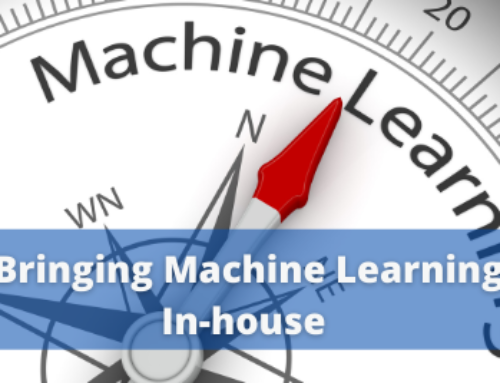Understanding what worked and why it worked in a fundraising campaign has become easily available to nonprofits with the use of analytics and BI tools. But we are now in a space where answering these questions isn’t enough. It may sound bold, but nonprofits need to be able to predict the future of funding for their organization. And it’s not only possible, it’s accessible using advanced analytics.
Predictive analytics is a game changer for organizations of all sizes not only informing timely, targeted communications and campaigns but actually driving overall strategy and vision. A recent study by IBM found that 78 percent of nonprofits with advanced analytics capabilities indicated higher effectiveness in performing their mission among other key metrics. Leveraging predictive analytics is empowering marketers and nonprofits to predict what will happen and as a result, they make better decisions, improve targeting, and maximize fundraising campaign ROI.
How can your organization reap the rewards of advanced technologies and access to data? We’ll show you how accessible predictive analytics can be. For some, “predictive analytics” might sound complicated, but, it doesn’t have to be. When you understand the basics and have the systems to support models, using predictive analytics becomes easy and accessible.
What is Predictive Analytics?
Predictive analytics is built on predictive modeling. Predictive models attempt to describe a relationship between two variables—a dependent and an independent variable. The dependent variable is the response variable and is usually, in the case of nonprofits, a donor behavior that you would like to predict such as response rate, likelihood to donate, etc. The independent variable is the predictor and is useful in making predictions of the response. Typical attributes that are used as predictors are:
- Donor giving history: Previous giving, cadence of giving, amount donated
- Donor demographics: Age, income, zip code, gender
- Appended data: Donor psychographics, lifestyles, attitudes
- Marketing data: Product behavior, historical campaign data
- Additional: Donation, donor, or household-level data
All of this data is used to understand the relationship between the two variables. Finding the model and determining its accuracy is what the predictive modeling process is all about. This process often requires several iterations and the quality of the model requires an understanding of the organization problem and the data, modeling algorithms and parameters, software, and implementation practices.
Best Practices to Guide You
Before getting started with predictive analytics it’s important to understand the pieces that must all come together to ensure success. We’ve defined these below:
- Define a Clear Objective: Decide what your objective is. Do you want to activate prospects? Increase donor value? Be clear on this before diving into any data.
- Validate Existing Data Sets: It may sound obvious but make sure you are working with data sets that are reliable and offer meaningful results. Inaccurate data leads to inaccurate outcomes.
- Upskill Your Team: Ensure your team is trained on how predictive analytics works and fundamental concepts such as A/B testing, data cleaning methods, etc. Or, work with outsourced experts who know.
- Invest in Technology and Expertise: Onboarding a full-service advanced analytics solution, like Lityx, empowers every level of your team with the capacity for predictive analytics, optimization, and automation.
- Add the Right Tools: Ensure that your database, CRM, marketing automation systems, and email systems are optimized and integrate with the predictive analytics platform.
- Get Team Buy-In: Make sure your entire team, especially senior management, is committed to a data-driven culture and marketing approach.
- Benchmark & Measure: Define key metrics, such as donor lifetime value, conversion rates, etc. Measure these regularly to begin to understand the actionable data that comes from predictive analytics.
Predictive Analytics in Action
A major nonprofit organization that advocates on behalf of its members put predictive analytics to work in their organization in partnership with Lityx. They saw dramatic results. “It was an extraordinary outcome for us. Better still is our continued improvement, especially in our primary objective of new member acquisition,” shares the Channel Director of the nonprofit.
The organization recruits members daily through newspaper inserts and shared mail advertisements. Their objective was to improve the efficiency of this marketing program and increase acquisition of paying members.
Lityx worked with the nonprofit to create predictive models of expected zip-code and zone-level response rates. Separate models were built for each sub-channel. For every new campaign, all potential delivery zones in the client’s print media network are scored on dynamic factors such as cadence and past performance since these are always changing. In order to make media buying decisions for each campaign, Lityx incorporates business constraints that must be adhered to—requirements like, organizational objectives, budget allocation across sub-channels, and newspaper minimum insert. With those requirements in mind Lityx generated optimal targeting decisions for each campaign.
With Lityx, the nonprofit has seen over a 90 percent improvement in acquisition rates and reduced cost per acquisition. They’ve also experienced an in-market model lift of over 5x from top-to-bottom zip code deciles, and now, complex modeling and optimizing acquisition processes are automated and integrated, so they can be used again in the future.
With Lityx, the nonprofit has seen over a 90 percent improvement in acquisition rates and reduced cost per acquisition.
Getting Started with Predictive Analytics
Do you think predictive analytics could help your organization achieve more? If you’ve reviewed the best practice above and feel aligned or even ready to start putting these into practice then you are ready to take your first step. If you don’t have an analyst within your organization, we offer free consultations to help organizations think through the ways predictive analytics can maximize fundraising ROI. Schedule a call today.


